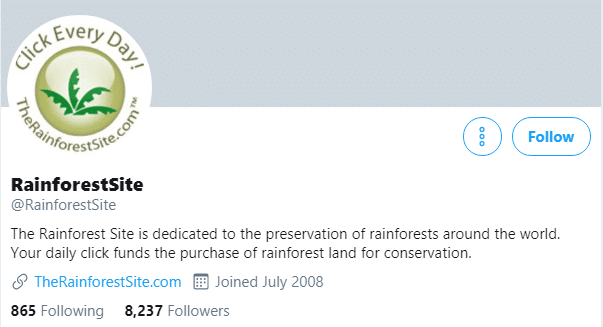22 Social Media Influencer Strategies Nonprofits Can Use



Wondering how to increase your nonprofit’s reach on social media? Let’s face it, the social media space today is a noisy one. It’s hard to cut through the clutter. Social media influencer strategies can help without resorting to paid advertising.
In fact, these social media influencer strategies can be more powerful than ads, because they’re perceived as more authentic. Simply put, you can ask other social media users to help you spread the word about your vision and mission.
You know what they say: “Ask and you shall receive.”
Here are three complementary categories of social media influencer strategies to help you increase your reach and leverage the power of social media influencers:
Generally it’s a blogger, podcaster or user of social media who has between 1,000 and 30,000 followers. Unlike a super-influencer with hundreds of thousands of peeps, these folks tend to operate within a specific niche. People pay attention to them because they create their own content, and it’s relevant to the interests of their fans. There are micro-influencers in just about any category you can think of — from food to travel to parenting to environment to justice to arts to animal rescue to historical preservation to early childhood education to literacy to nonviolence to… you name it.
My last full-time gig as a director of development and marketing was with the S.F-Marin Food Bank. Social media was just taking off. We had a Twitter and a Facebook account. Followers, but… not a lot of action. Social media wasn’t really helping us reach our volunteer recruitment and fundraising goals.
Then we noticed something. Two groups of bloggers were the most engaged in sharing our posts: mommy bloggers and food bloggers. We began to engage with them. What we learned was:
It turned out that when we reached out personally to these micro-influencers to ask for their help, they were more than willing to say yes. It made them look good, and it helped their constituents feel good too. We raised awareness, added followers and ultimately converted a decent number of these folks to donors. We also let these influencers know how much their help meant to us, and reported back to them on results.
Hidden gold! Studies show employees are more than twice as trusted as a CEO, senior executive or activist consumer. Also, their social posts generate 8X greater engagementthan posts from their employer. The average Twitter user has 707 followers; the average Facebook user has 338 friends. That means a staff of 10 socially engaged advocates has a potential average reach of 10,450. This is an opportunity you don’t want to overlook!
For each goal, consider how employee social advocacy can help.
Online fans are folks who don’t work for you but are proactively connected to you in the digital space. They have, in some way, raised their hand to say “I like you, I trust you, and what you do matters to me.” They do this by simple friending and following, but the most engaged fans do more. They consume your content by clicking on links, sharing your content, making comments and participating in discussions. They may be donors, members, social media connectors or volunteers. You have the ability to reach out to them because their names are on a list. The list could be as broad as all your Facebook friends or a narrower list (e.g., one you create on Twitter of volunteers for a particular project; one that exists on Pinterest of folks who follow a specific board, one you have on LinkedIn comprised of those who connect with your corporate profile, etc.). It might also be an email list, say of donors or volunteers; you can use this list to ask folks to become social media ambassadors.
Determine your likely most passionate fans by cross-referencing the list of folks who friend, follow and share with current donors, event attendees and volunteers. Send them a formal invitation to join your team. Be sure to make them feel special! Julia Campbell of Marketing for the Modern Nonprofit has created a free downloadable Nonprofit Guide to Recruiting and Coordinating Social Media Ambassadors.


The Rainforest Site has sponsors who’ve agreed to help subsidize their work whenever someone clicks on their online link. This gives ambassadors something tangible to share with their networks. It’s an easy ask that makes people feel good.

Here’s another tweet from the Rainforest Site folks that just begs to be opened because it’s so tantalizing and unusual. Ambassadors can feel good sharing this, because it’s bound to arouse curiosity. Bonus: when folks click the link it takes them directly to the organization’s blog which has a complete array of share icons – so friends of fans may now share with their networks as well.

When you ask others to spread your message you leverage the power of ‘social proof.’ This is one of Robert Cialdini’s top six magical powers of persuasion. It’s the principle at play in review sites like Yelp. When other folks praise you it’s more credible than when you praise yourself.
Your job is to find the people who care about your work and who have influence over others. Of course, your own staff fit that bill. As do your own fans, followers, volunteers and donors. And when it comes to influencers outside your current community, today it’s not just television pundits or journalists who wield the magic power or persuasion. It’s often bloggers, power Twitter users, people on YouTube or Instagram and so forth. Within particular social media communities, these people have fame and influence similar to big-name celebrities. And they aren’t a pie in the sky target for you. You can find them. You can reach out to them. You can connect with them!
Stop using the excuse that you can’t create awareness online because of limited capacity and staff resources. It’s time to build a plan to leverage the significant resources you already have: staff, donors, volunteers, fans, followers and others who’ve demonstrated they care about what you do. Empower these folks to become your champions, thereby leveraging the power of their individual social networks.
Heed the advice above, and you should see a big engagement boost! Just be sure to incorporate social media influencer strategies to convert engagement into other desired actions. Bottom line: You ultimately don’t just want likes, follows and clicks. You want email addresses, signers for your petition, ticket buyers, volunteers, donations and whatever else you need to further your vision and mission.
Comments
Shane McEvoy
Jason Chmura
Holly Bodner